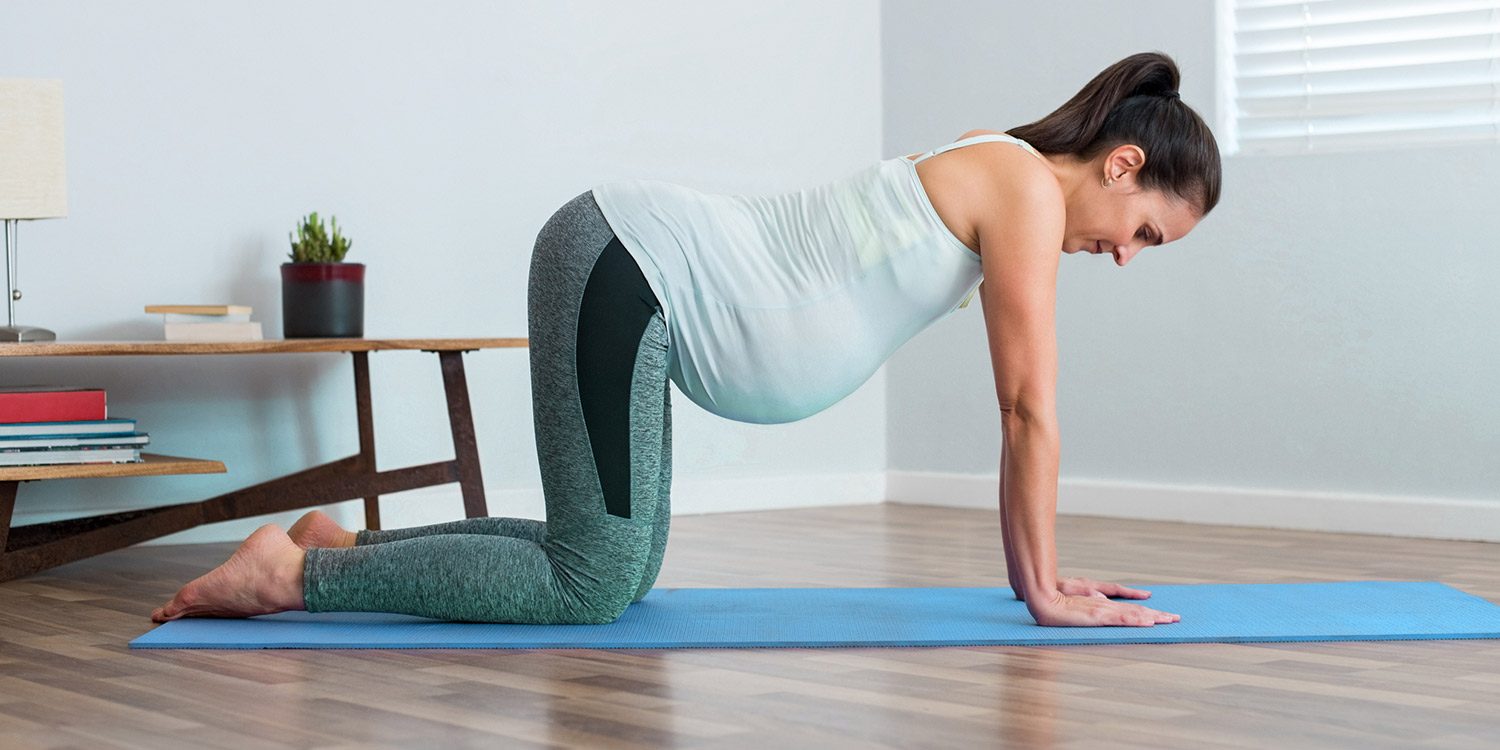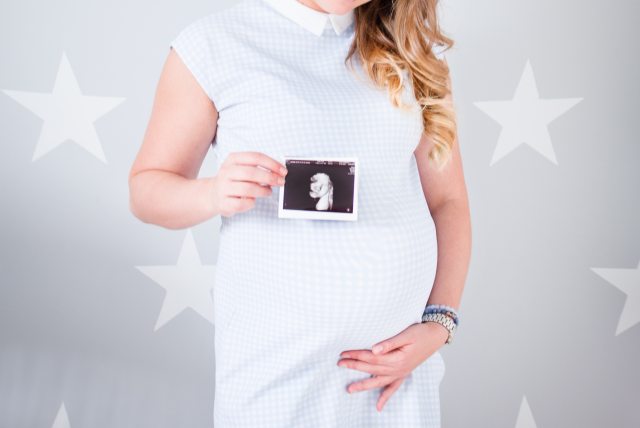
Staying active while pregnant is great for both you and your baby’s health. Whether it be yoga classes, light lifting, or taking walks, any exercise that gets your heart pumping is a fantastic addition to your daily pregnancy routine and a great way to stay healthy. Jaime McFaden, a mom and trainer with audio fitness app Aaptiv, is sharing the various ways you can stay active during and after your pregnancy.
Consistent exercise during pregnancy has countless benefits, including improving your overall health, reducing your risk of weight gain, and can even facilitate a smoother delivery process. However, it’s always most important to listen to your body and base your workouts on how you—and your baby—are feeling. Each pregnancy is different, and there are no hard and fast rules on what you should be doing during each step of your pregnancy.
With that being said, here is a great general guide of the best exercises for pregnant and postpartum women. I suggest trying these out and seeing how your body reacts—every pregnancy is unique, after all.
Workouts by Trimester
Before beginning any exercise, especially while pregnant, be sure to get clearance from your doctor. Additionally, you should be adapting your workout routine based on the trimester you are in. Each trimester comes with its own challenges, so adjusting your workout based on how your body is growing and changing is a necessity.
First Trimester
During the first trimester, women are usually feeling totally normal or like complete crap. The first trimester can be awful for some women, so be sure to listen to how your body is feeling and not to push it too hard. Jaime recommends low-intensity cardio and light strength training. If you didn’t work out regularly before pregnancy, it is essential to ease yourself into an exercise regimen to prevent overworking yourself.
Second Trimester
During the second trimester, Jaime suggests keeping your workouts at an intensity level of 60-70% and warns against pushing your body too hard. Full-body workouts like yoga are a great option during this trimester, as opposed to targeting specific muscle groups with strength training. As your body begins to change more, it’s essential to create a workout routine that is adaptable and sustainable for you.
Third Trimester
The third trimester sometimes feels like it’s never going to end, but don’t worry—you’re in the home stretch! This trimester is when your body is being constantly stretched and pushed, and many expectant moms are feeling especially tired. If you aren’t feeling up for exercise, that’s totally OK! However, if you still want to get your heart pumping, walking, swimming, and other low-intensity exercises like water aerobics are all great options.
Postpartum Exercises
Congratulations on welcoming your new baby into your life! After giving birth, doctors advise against exercising for at least 6-8 weeks. During this time, you can focus on letting your body rest and bonding with your new baby. When you’re feeling comfortable enough, be sure to gradually ease back into exercise by making an effort to move a little every day until you’re feeling up for more.
When you’re starting out exercising again, it’s important to do kegel exercises. Your pelvic floor muscles are weakened during birth, and doing kegel exercises afterward is helpful to strengthen them and prevent incontinence. Kegel exercises may feel more difficult at first, but don’t worry—this is completely normal. In time, everything will start feeling normal again.
Low-impact activities like walking, swimming, yoga, and water aerobics are all great options for postpartum moms to ease back into exercising. Just remember, there is no secret formula for postpartum moms—the best workout is the one that works for you!
Additionally, working on your core strength postpartum is helpful for a quicker recovery. Regaining your core strength and stability is a long process that takes time and patience. It’s suggested to avoid core exercises where you are twisting or laying on your back, like crunches. Some wonderful options include raised leg extensions, the yoga boat, and leg and arm extensions.

















